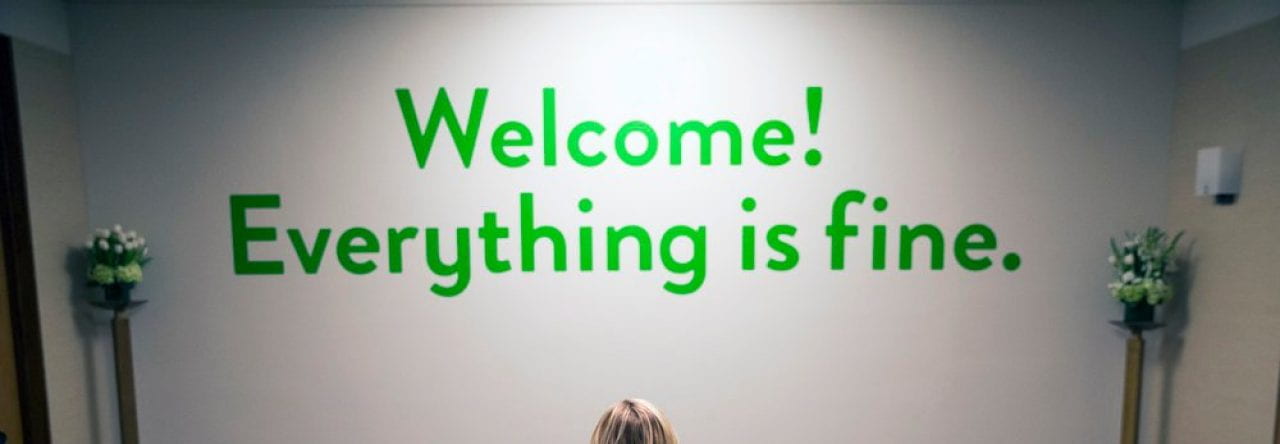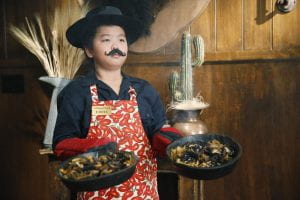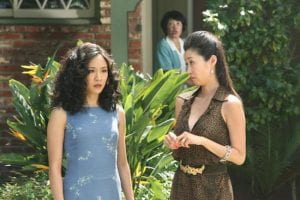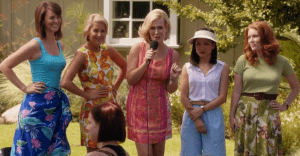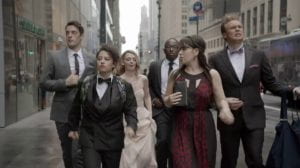Lopez, Victoria A. “they’Re Only Laughing ‘Cause You’Re Pretty”: Women’s Experiences at Comedy Clubs, San Diego State University, Ann Arbor, 2017. ProQuest, http://prx.library.gatech.edu/login?url=https://search.proquest.com/docview/1987948729?accountid=11107.
This source aims at attempting to understand why so few female comedians make it past the comedy club stage, and the author studies participants of both genders with regards to their perceptions of female comedians, the stereotypes that these women are generally expected to embody and the culture that is experienced by women who have an interest in pursuing a career in comedy. Namely, the study examines the engrained societal belief that “women are not funny” (held by both genders) and how this contributes to dissuading more women from attempting to become comedians.
Most interestingly, the source interviews several amateur comedians attempting to gain a following through performing at comedy clubs, bringing results to the table that suggest almost all women believe they must act like a man in order to be taken seriously by both the audience and their fellow comedians. Even then, however, there is an element of sexuality versus loss of femininity that plays heavily into everyone’s perception of the female comedian as well as her set. Ultimately, the author concluded that there are multiple forces working against women in comedy, some of which stem from the women themselves.
Kibler, M. A. (1999). Gender conflict and cercion on A&E’s an evening at the improv.Journal of Popular Culture, 32(4), 45-57. Retrieved from http://prx.library.gatech.edu/login?url=https://search.proquest.com/docview/195362049?accountid=11107
This source takes a look at who the audience is and how they react to jokes. Many comedic routines are gendered, both in jokes and in responses to jokes, and, although the audience in general may laugh at a domestic abuse joke, for example, not everybody is laughing equally or as genuinely. It has been said that comedy creates a community, but the community is formed by the majority at the expense of the minority; since comedy is such a male-dominated field, minorities such as women must not only laugh along with these jokes but pander to this crowd when crafting their own routines.
The most important part about this source, however, is the look into what the creation of this community does. Besides generically reinforcing the stereotypes that most jokes are about, the continuing jokes that pander to the majority simply reinforce the supremacy of that majority. They create an atmosphere of group versus group, making it seem even more daunting for the lesser of the groups (women) to break into the greater of the groups (men) as they feel even more so than normal that they are competing against this group entirely.
Montemurro, B. (2003). Not a laughing matter: Sexual harassment as “material” on workplace-based situation comedies. Sex Roles, 48(9), 433. Retrieved from http://prx.library.gatech.edu/login?url=https://search.proquest.com/docview/225367946?accountid=11107
This source focuses on the impact that using sexual harassment, rape and female degradation jokes as parts of mass media comedic routines has on the way that society reacts to actual occurrences of these actions – specifically, devaluing and trivializing them. The implications here are widespread and long-lasting; multiple studies cited within the source showed a clear link between exposure to sexual harassment jokes and lack of empathy towards women who actually experience this harassment, most specifically when it comes within the workplace.
More than anything, however, the source cited other studies that established a link between how characters in situation comedies react to unconventionally attractive women and how viewers of those shows responded in real life to women – namely, that laughing at larger women on television led them to discriminate against them in real life. The idea that women are meant to be sexualized and that this sexualization is normal – reinforced both through harassment jokes and through the degradation of women in general – is harmful to the societal view of women, the advancement of women and, more than anything, the right for women to be taken seriously when presenting a valid concern.
Hitchens, Christopher. “Why Women Aren’t Funny.” Vanity Fair, Vanity Fair, Jan. 2007, www.vanityfair.com/culture/2007/01/hitchens200701.
In this source, the author takes an anti-females-in-comedy approach and focuses specifically on why women are generally not funny. He argues that men must be funny in order to be able to attract women, whereas men are always attracted to all women and therefore women do not need to put in nearly as much effort to appear attractive since they are clearly being sexualized at all times. Although the source admits that there are some funny female comedians, he stereotypes them all as being “[large], [lesbian] or Jewish”, using derogatory terms in the process.
The pinnacle of this article is when the author mentions that men do not want women to be funny and/or work in comedy because making people laugh is a sign of intelligence, and women would represent a fair amount of competition in the arena of brainpower. Not wanting this competition and needing to feel as if they are necessary, men hold tight to humor as their way to attract a mate and do not let females in on this exclusive world because “they do not need to be funny to be successful”.
Belsky, Marcia. “The Lose-Lose Life of the Female Comedian.” The New York Times, The New York Times, 11 Nov. 2017, www.nytimes.com/2017/11/11/opinion/women-comedy.html.
This opinion article is written by a female comedian telling her story of first getting started in comedy. She writes about the sexualization that comes with being a woman in a primarily-male field, as well as how refusing to sleep around ended many conversations with people who could have potentially been influential. She writes also about how she tried to become “one of the boys”, ignoring their views of her, but how it is nearly impossible to get somewhere in a field that relies on others’ approval if one is missing that. Eventually, she has become confident in herself as a female and has experienced some success.
However, most importantly are the author’s comments about females who are experiencing harassment being unsure when to call the harassers out for what they are doing, when to put a stop to the actions, etc., especially in comedy where everyone is expected to “chill out” and “have fun”. The author supposes that, rather than deal with any complaints or issues arising, the industry generally has concluded it is easier not to have women than to have to deal with female anger towards unfair behavior.
Khazan, Olga. “Why Men Don’t Like Funny Women.” The Atlantic, Atlantic Media Company, 19 Nov. 2015, www.theatlantic.com/health/archive/2015/11/plight-of-the-funny-female/416559/.
The author of this article writes about why men do not find females funny, although, in many cases, other females find this female funny. Through writing the rest of the article, the author fleshes out the idea that humor is a sign of intelligence and, therefore, it is evolutionarily logical that one would prefer a funny mate – and therefore, men must try to be funny in order to find said mate. However, interestingly enough, everyone claimed they wanted a mate with a sense of humor – although women defined this as “telling jokes” and men defined this as “laughing at my jokes”.
Most tellingly, the author cites a source in which women called themselves “unfunny” from the beginning before writing witty lines, and the results of this survey found that the male lines were more often rated to be the funniest. This carried over to the conclusion of the cited survey, in which almost 90% of both genders’ participants rated men to be the funnier gender. Results like this beg the question of whether or not the gender disparity in comedy is self-inflicted or a result of actual societal barriers.

